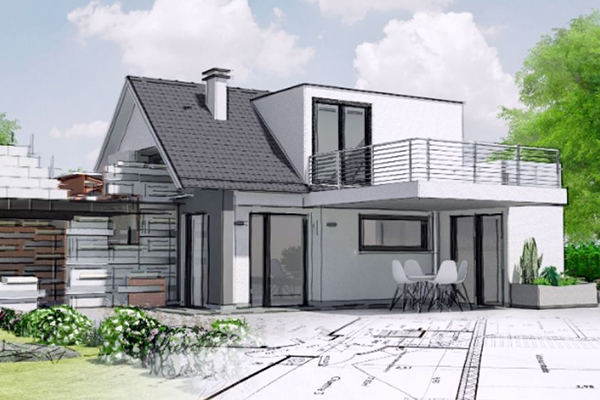The short answer to this is yes, and it already has.
Life as we know it has been changed this year. In a survey conducted by the Institute of Directors in September, it showed that 74% of firms planned on maintaining the increase in home working.
This, coupled with many children being off school for large periods of time, has made us hyper aware of how we live in our homes, and how well it functions. Certainly, when it comes to designing a new home, or extending, this has made certain design features a priority!
Multi-functional spaces
From conversations with our clients, the focus has really been on making their home versatile and flexible. If more family members are going to be co-habiting through the day, rather than going ‘out’ to work or school, then there needs to be multi-functional spaces within the home, so everyone has their own space that is versatile enough to change its use throughout the day whether that’s to work, to workout, to teach or watch TV.
This goes a little further than thinking; “I wish I had a dedicated office to escape the hustle and bustle of a busy family dining room”, this is about improving house design as a whole now we have come to understand how coronavirus (or any pandemic in the future) may impact our lives. As architectural designers, our aim is to work with our clients to design spaces that maintain the homeowner’s happiness, by creating less stressful environments and also help keep productivity up while working from home.
Prioritising practicality
The spreading of germs has become a huge concern, especially when transitioning from outside into our homes. One design solution is to add a boot room, or porch to the design of a home. This would create an area where clothing and shoes can be taken off before entering the house, reducing the potential transfer of bacteria inside. This is particularly important for people working within the medical profession or carers, where the possibility of being around Covid is higher. Adding a sink or shower to the boot room, would also ensure that clothes could be taken off, bagged for cleaning and you would be able to wash before entering the house. These rooms can often be added to the side or back entrance, so it doesn’t detract from the kerb appeal of your home. We would explore these possibilities with you.
Designing interiors to maximise exterior space
For many, the solace of outside space/ garden has really helped to endure the last few months. Maximising liveable outside space has become a key requirement. Think about how much outside space you have and how important it has become to you since the pandemic. When you start the process of home design, you will generally know how big your land size is, so if a bungalow style house takes up a lot of square footage, and eats into garden space, think about a two-storey home. If you want to create extra outside space to your existing property, you can think about adding a balcony to upper levels. Underutilised space can be a particular issue in existing homes so review which rooms could be used more, such as a garage conversion or attic conversion, and design your extension around that. With biophillic design elements, you can also help bring the outside in which has been proven to improve a person’s wellbeing. You can read more about that here.
Hygienic choices of materials
If you are designing a home, you have the advantage of being able to choose the materials you use from the ground up. As we have all become aware of the easy spread of bacteria, easily wipeable surfaces, clean lines and a minimalist design approach has been popular. In particular, you can think about the type of material you use. For example, copper has natural antibacterial properties, so this is a good choice for kitchen handles and taps. These are also easy low-cost modifications you can make to your existing property.
As we have mentioned before, a boot room or porch with a sink / shower that is easy to wipe down, reduces the opportunity for any bacteria to transfer into the home. A guest toilet and vanity close to the entrance of the house would also act as a barrier in the same way.
We would love to hear your thoughts on this! How has Covid-19 affected how you live at home and what do you think would improve it?
Get in touch with Kevin by emailing him on kt@kevintoddarchitectural.co.uk or call: 07973 227925.

Recent Comments